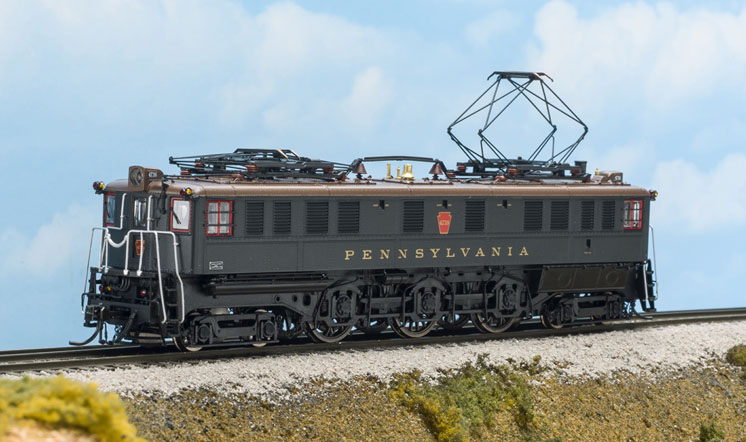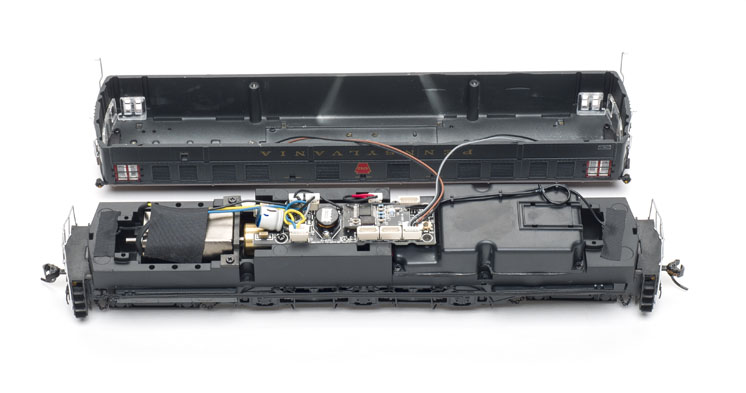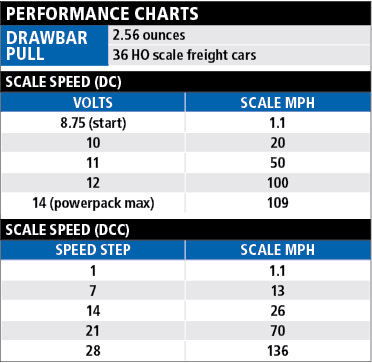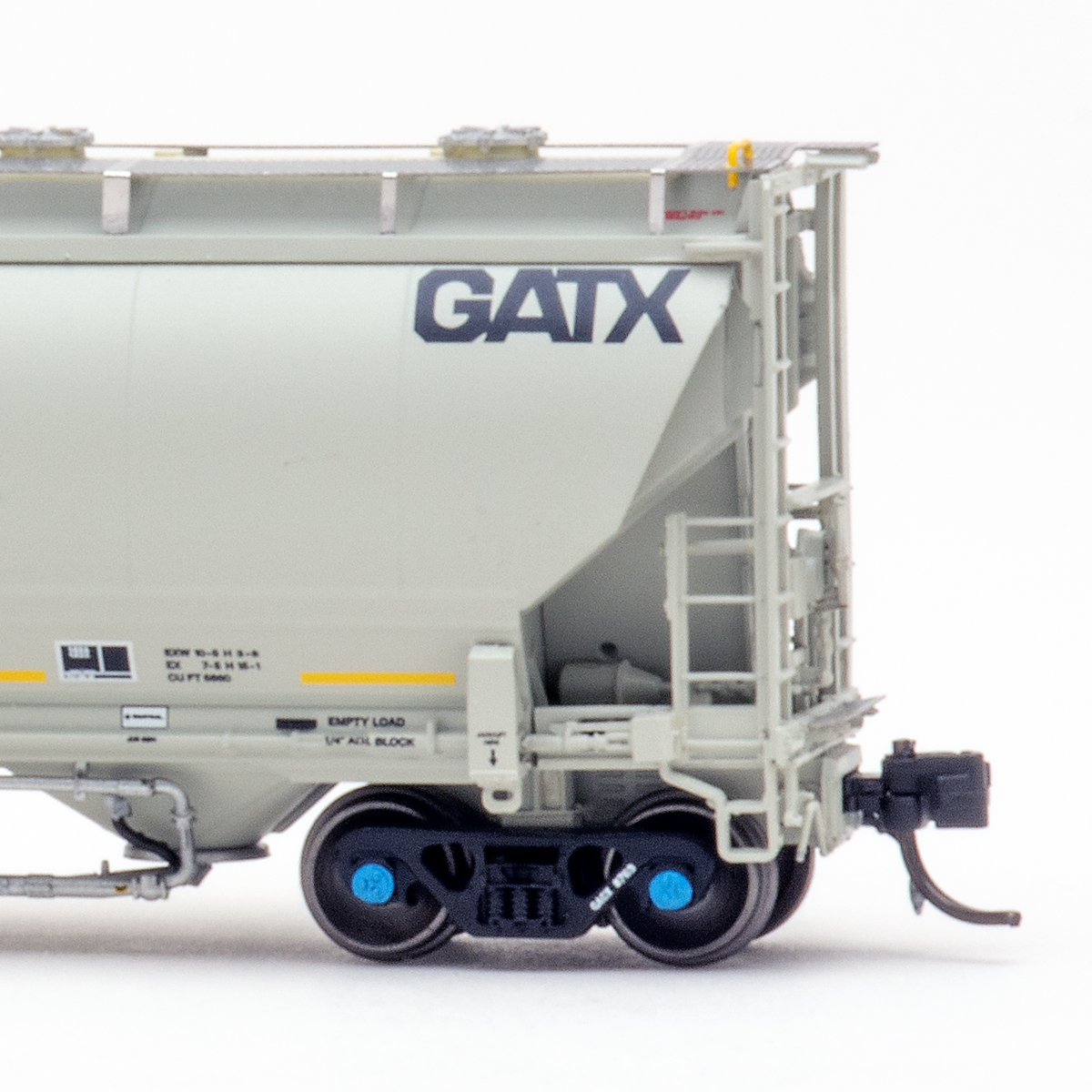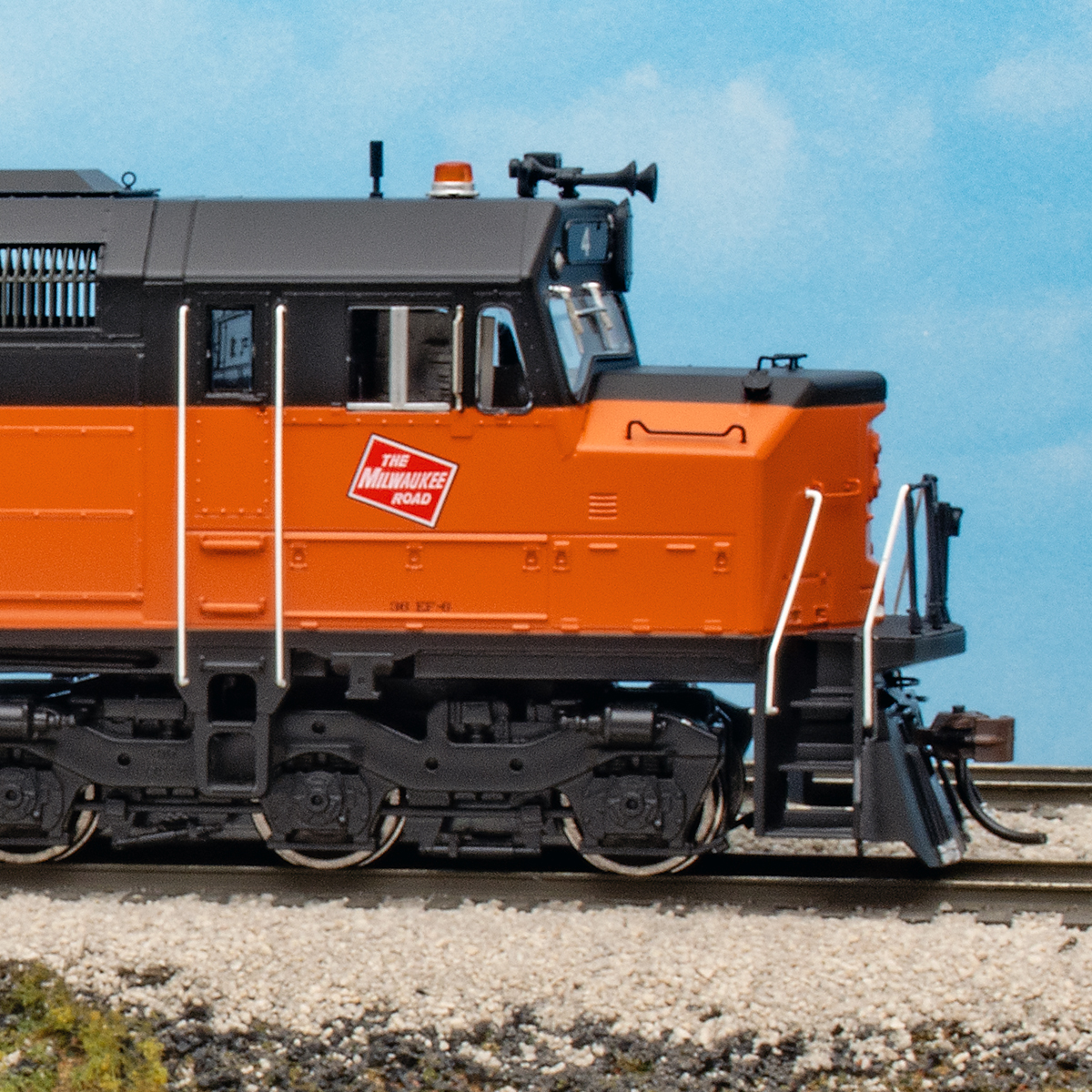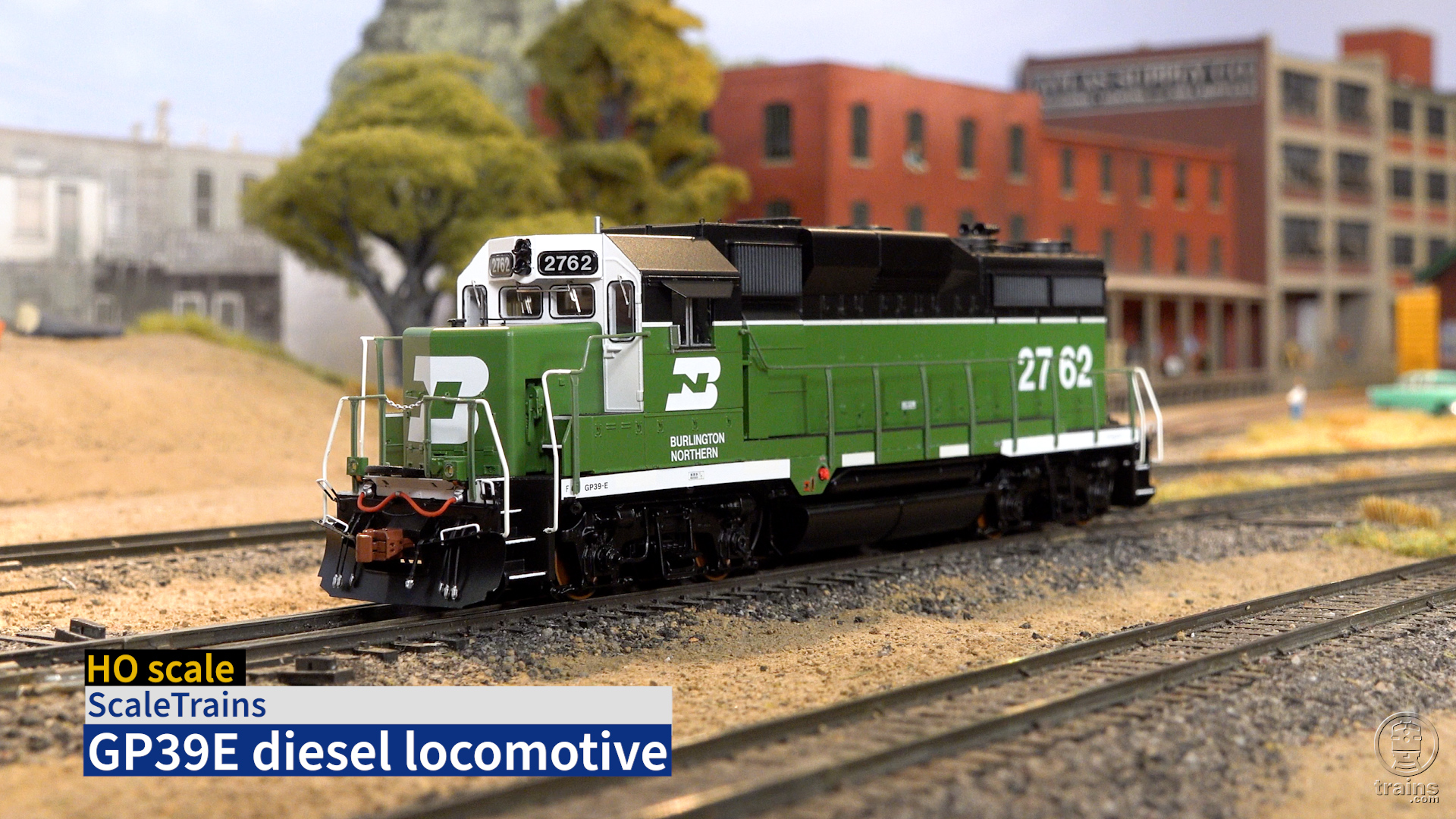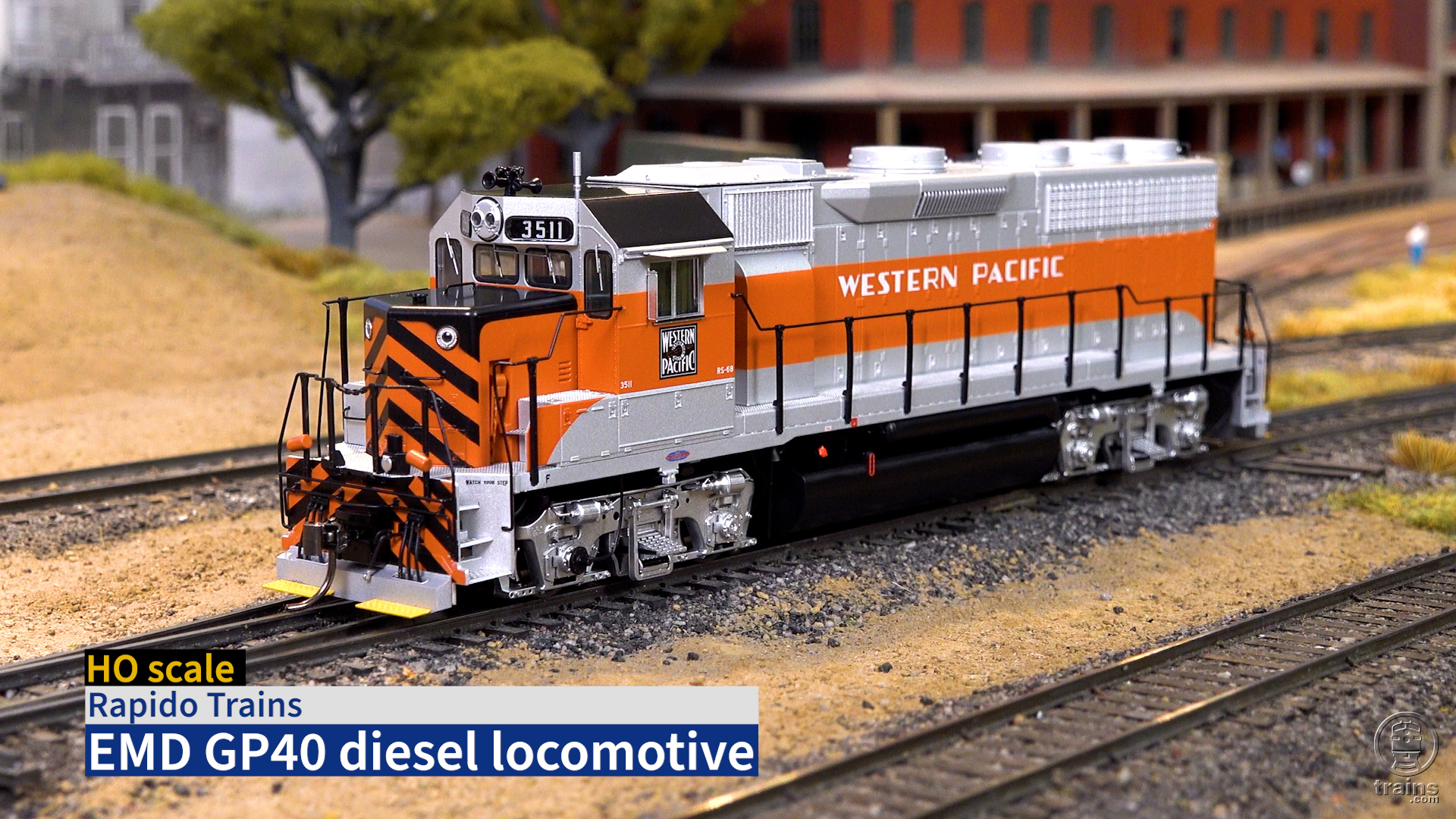NOTE: We ran an earlier sample of the P5A on our Milwaukee, Racine & Troy model railroad. WATCH THE VIDEO!
The boxcabs are back! Broadway Limited allowed us to get a sneak preview of its new HO scale Pennsylvania RR P5a electrics, and now we have production models in the office to test.
Previously available only in brass, these boxcab electric models are of primarily die-cast metal construction, giving them 1 pound, 6 ounces of heft for potentially pulling long freight or passenger trains.
While known as freight haulers for most of their lives, the P5a was the first successful mainline electric motive power under PRR catenary. Assigned to pull passenger varnish from New York’s Penn Station to Philadelphia’s 30th Street Station, the locomotives lost their starring roles when the GG1 electric came on the scene.
Construction began in 1931 at Juniata Shops in Altoona, Pa., with a pair of prototypes. After rigorous testing, regular production commenced in 1932. Starting on May 1, 1934, the design shifted to a steamlined centercab design similar to the GG1 after a collision with a truck killed the crew in the vulnerable cab of the flat-faced units.
Once the “modifieds” came into service, they were mated with boxcabs as multiple units so that in at least one direction crews would have more protection. By this point, most P5as were working as freight engines, where they were used in multiples of two or three.
When production ended in 1935, 92 P5s had been built in Eddystone, Erie, and Altoona, Pa. Electrical equipment orders were shared evenly between Westinghouse and General Electric. Generally, GE-equipped P5as were built at GE’s plant in Erie and Westinghouse-equipped units were built by Baldwin at Eddystone, but the final 10 locomotives, all modifieds, were built in Altoona of both GE and Westinghouse parts.
The P5a locomotives were replaced by General Electric 4,400hp E44s between 1960 and 1963. Only one P5 has been preserved, prototype no. 4700 at the National Museum of Transportation in St. Louis. The rest were scrapped by the mid-1960s.
Broadway Limited’s model matches dimensions from prototype equipment diagrams posted on Rob’s Pennsy Page at www.prr.railfan.net. Our sample was decorated in as-delivered dark green locomotive enamel with a brown roof and gold lettering. Even the smallest sand box and fuel oil door lettering was legible. A builder’s plate indicates the locomotive was built with General Electric equipment in April 1933.
Pop-off valves for the steam generator, the bell, and the early trolley whistle are brass castings. The window frames are trimmed in red, and the end railings – made from flexible engineering plastic – are painted silver to simulate the aluminum used on the full-size locomotives.
The scale-sized 72″ diameter drivers have alternating spring cup detail indicative of the quill drive favored by the PRR on its older electrics. However, the center drivers were blind (flangeless) on the prototype, unlike the model, which relies on a significant amount of lateral movement to allow negotiation of tight-radius model railroad curves and turnout angles.
The four-wheel pilot trucks include restraining chain details at their ends. Wipers on their axles help improve power pickup.
The pilots have a combination of molded in detail and separately applied plastic and metal parts, including non-operating classification lights with colored jewels. On this early prototype, there are also a pair of classification lights on the upper corners of the cab and each end. Metal knuckle couplers are mounted at the correct height.
To access the inside of the locomotive, remove the four screws between the drivers and pilot trucks, then slip the end handrails that link the cab ends with the steps from the holes at the bottom of the steps. The body can then be slowly lifted off the frame.
Inside the die-cast metal shell is a can motor with flywheel at one end of the die-cast metal frame. The motor powers the drivers through a center-mounted gear tower. At the opposite end of the frame are a pair of round speakers facing down in a rectangular plastic enclosure. Between the motor and speakers is the dual-mode sound decoder.
The light-emitting diode headlights in the body shell are connected to the decoder with a four-pin plug. There is no provision to collect power from the pantographs.
The model is equipped with BLI’s Paragon3 sound and operation system and supports the firm’s Rolling Thunder system (see the review in the March 2018 MR). Sold separately, the Rolling Thunder subwoofer and receiver are placed under the layout. This system adds low-frequency bass sounds to the already loud sound from the engine-mounted dual speakers.
I tested the model first using an NCE PowerCab Digital Command Control (DCC) throttle. This gave me full control of all the sound effects packed into the model. These sounds include pantograph up and down sounds and an electric arc sound. Users can choose between the originally equipped trolley whistle used during the first days of passenger service, or the loud, single-tone air horn added when the P5as were used primarily in freight service.
Broadway Limited also allows users to record a set of instructions, called a macro, that the locomotive will then carry out. For a locomotive such as this, it could be programmed to run a set pattern to simulate a commuter train operating between several stations.
The model had excellent slow speed performance, smoothly crawling along at just above 1 scale mph in speed step 1. Speed step 28 saw 136 scale mph – significantly higher than the locomotive’s design speed of 90 mph.
The locomotive’s pulling power was disappointing, though. For its weight, it seemed to be leaving something behind. A common problem on steam locomotives with pilot and trailing trucks is that the springs on the trucks can lift the locomotive from the rails enough to let the drivers spin.
That appears to be happening with this model. With the pilot springs in place, the P5a generated 2.56 ounces of drawbar pull, equivalent to 36 freight cars on straight and level track. With the pilot springs removed, drawbar pull jumped to 3.84 ounces, equivalent to 54 freight cars.
But this isn’t a perfect fix. When I removed the springs, the pilot trucks had a tendency to drop a wheel while going around a curve. This wasn’t an issue with the springs installed. Tracking through turnouts was fine with or without the springs. The ultimate solution would take a bit of tinkering.
As a dual-mode locomotive, the engine also operates on DC power. As the charts show, the model again has excellent slow-speed operation. As is typical of dual-mode-decoder-equipped models, it takes much of the throttle range to get moving.
Using a Bachmann power pack, I recorded a top speed of 109 scale mph at the pack’s maximum voltage of 14V. On DC, all sound effects are automatic, with the sound of the locomotive’s blower motors and drive motor whine predominating as they rose in pitch as the model moved faster.
This well-detailed model looks and sounds great, and with a bit of tinkering, it could be a strong-pulling locomotive as well. If you’ve been itching to expand your fleet of Pennsy electrics beyond the GG1, BLI’s P5a is just the ticket.
Manufacturer
Broadway Limited Imports
9 East Tower Circle
Ormond Beach, FL 32174
www.broadway-limited.com
Era: 1935 to 1965, depending on paint scheme
Road names: Pennsylvania RR, passenger and freight type (multiple road numbers)
Features
• All drivers powered
• Blackened metal pilot and driver wheels, in gauge
• Die-cast metal body and chassis
• Die-cast metal knuckle couplers, mounted at correct height
• Minimum operating radius: 18″ or greater
• Paragon3 sound and operation system with Rolling Thunder, operates on DC and DCC layouts
• Weight: 1 pound, 6 ounces





